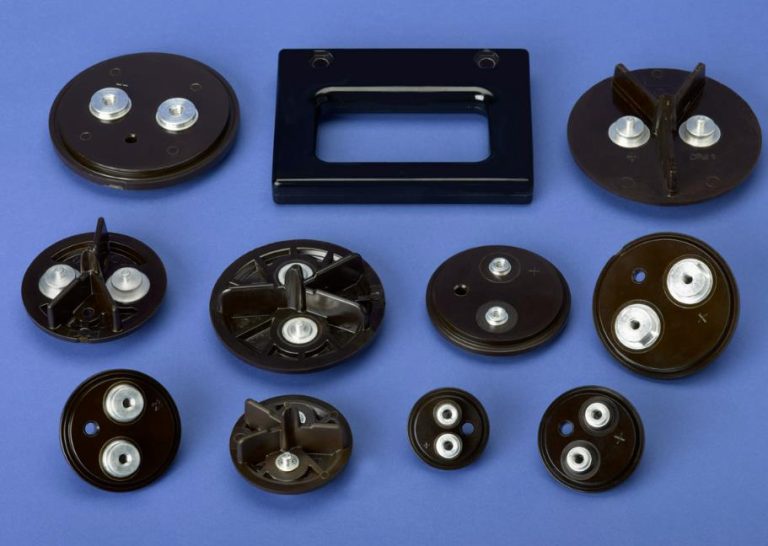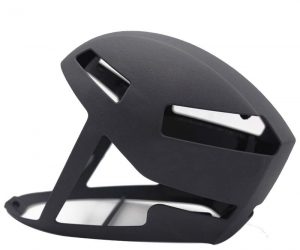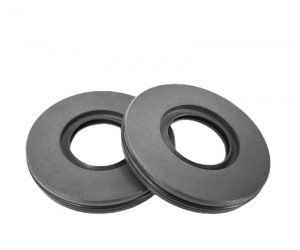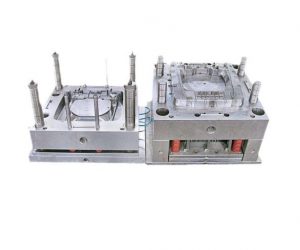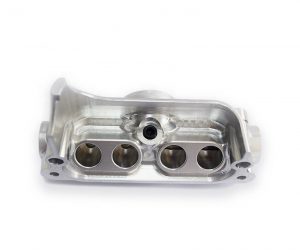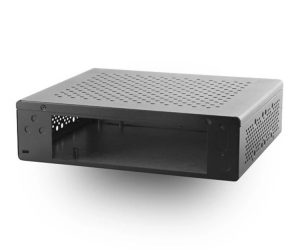An injection mold is a tool used to make plastic products, giving them the right structure and exact size. During the process of making plastic parts, the injection mold is super important for shaping and deciding how big and what shape the final product will be. Even though there are different types of plastics, each with its own properties, and various injection molding machines, all injection molds have a similar basic structure.
Here's what typically makes up an injection mold:
- Mold Frame: This is the backbone of the injection mold, holding everything together and keeping it stable. It's usually made from strong stuff like steel.
- Mold Core: Think of this as the heart of the mold. It shapes the plastic into the desired form. Like the frame, it's also made from tough materials and is carefully crafted and treated to ensure it lasts and works well.
- Mold Cavity: This is where the plastic goes in the mold. Its shape and size match the final product. Made from durable materials, it's precisely made and treated to keep things accurate and smooth.
- Guide System: This helps direct the flow of plastic into the mold cavity. It includes parts like guide posts and sleeves to make sure the plastic fills the mold just right and at the correct speed and pressure.
- Cooling System: This part controls how fast the plastic cools down and solidifies in the mold. It uses water channels and other components to make sure the plastic sets properly, so it has good strength and looks nice.
- Demoulding System: Once the plastic is set, this system helps remove it from the mold without damaging it. It includes parts like stripping plates and rods to gently release the product.
In summary, an injection mold is a detailed and precise instrument essential for creating plastic items. By designing and building these molds correctly, manufacturers can produce plastic goods that meet the needs of various industries and applications.
Injection molding is a technique used to make lots of complex-shaped parts quickly. Here's how it works: molten plastic is shot into a mold under high pressure by a special machine. After cooling and hardening, the finished product pops out. The parts that touch the plastic directly, like the gating system and molding bits, are the trickiest ones. They change shape with each use and need super precise workmanship.
First, the plastic gets melted in the heating barrel at the bottom of the injection machine. Then, pushed by either a screw or plunger, it travels through the machine's nozzle and into the mold via the gating system. Once inside, the plastic cools down, solidifies, and takes the shape of whatever the mold is designed for. When it's set, the product comes out of the mold. These molds have different sections like forming areas, guides, pushers, temperature controllers, air vents, and supports.
Mostly, these molds are made from tough steel materials such as carbon structural steel, carbon tool steel, alloy tool steel, and even high-speed steel. This method is mainly for making things from hot plastic. You can find injection-molded products everywhere – from everyday items to complicated machinery parts, electronics, and automotive components. It's one of the most popular ways to manufacture plastic stuff.
Injection molding is a manufacturing process used to produce a wide range of plastic parts and products. The injection mould, which is a critical component of the injection molding machine, has a consistent basic structure and works on a simple yet effective principle. Here is an overview of the working principle of the injection mould with a consistent basic structure:
The injection mould is designed with two main halves, the core and cavity. The core and cavity are placed together to form the mould cavity. The molten plastic material is then injected into the cavity through a small opening in the injection mould.
The injection mould works on the principle of pressure and heat. The plastic material is heated to a melting point and then injected into the mould cavity under high pressure. Once the molten plastic is injected into the cavity, it takes on the shape of the mould cavity as it cools and solidifies.
The mould cavity is designed to be slightly larger than the final product size, allowing for shrinkage during the cooling and solidification process. The mould cavity is also designed to allow for the easy removal of the finished product from the mould.
The injection mould with consistent basic structure has a simple design that allows for easy assembly and disassembly. The core and cavity are designed to be interchangeable, allowing for the production of different parts using the same mould.
The injection mould is also designed to be durable and withstand the high temperatures and pressures involved in the injection molding process. The mould is typically made from high-quality materials, such as hardened steel, to ensure long-lasting performance.
In conclusion, the injection mould with consistent basic structure works on a simple yet effective principle of pressure and heat. The molten plastic material is injected into the mould cavity under high pressure and takes on the shape of the mould as it cools and solidifies. The injection mould is designed to be durable and withstand the high temperatures and pressures involved in the injection molding process, and its simple design allows for easy assembly and disassembly.
Injection molding is a highly efficient and cost-effective manufacturing process for creating plastic parts in large volumes with high precision and accuracy. This process involves injecting molten plastic into a molded cavity and allowing it to cool and solidify, taking the shape of the mold. The consistency of the injection mold's basic structure plays a crucial role in ensuring the production of high-quality plastic parts.
The Two Principal Components of Injection Molding
The injection molding process has two principal components, namely the mold base and mold cavity. The mold base contains the injection mold's various parts and subsystems, such as guide pins, bushings, slide retainers, ejector pins, and hydraulic cylinders. The mold cavity determines the size and shape of the final product it produces.
The Basic Principle of Injection Moulding Process
The injection molding process operates based on transforming plastic pellets or granules into molten plastic using high pressure. The molten plastic is then injected into the mold cavity through a sprue. Pressure is sustained inside the mold cavity until the plastic cools and solidifies, taking the shape of the mold. The mold is opened, and the newly created plastic part is ejected from the mold cavity.
The Principle of Injection Moulding Machine in Your Words
The injection molding machine is a crucial part of the injection molding process and is responsible for melting, injecting, and cooling molten plastic to create the desired plastic parts. It comprises an injection unit and a clamping unit, each with specific functions. The injection unit melts and injects molten plastic into the mold cavity, while the clamping unit opens and closes the mold and maintains the necessary pressure inside the mold cavity.
The Structure of an Injection Mold
The injection mold's structure must have a consistent basic structure to effectively seal and house the molten plastic and ensure high-quality plastic parts production. The injection mold is designed with specific features to improve the flow of molten plastic and decrease the likelihood of shrinkage or warping during the cooling process.
The mold cavity is designed with uniform wall thickness and radius to ensure the even distribution of plastic during injection. Furthermore, the injection mold may integrate cooling channels to dissipate heat, allowing for uniform solidification of the plastic. The cooling system can differ depending on the application and complexity of the product being produced.
FAQs
What are the two principal components of injection molding?
In injection molding, the two main components are the mold base and the mold cavity. The mold base is the fundamental structure of the entire mold assembly, providing support and stability. It usually includes A board, B board, ejector system, and sometimes cooling channels or heating system. The mold base must be strong enough to withstand the high pressure and high temperature during the injection molding process.
On the other hand, the mold cavity is a specific part of the mold where plastic material is injected and formed into the desired shape of the product. This component comes into direct contact with molten plastic, shaping it into the final part. The design of the mold cavity is crucial as it determines the accuracy, surface smoothness, and overall quality of the injection molded parts.
Overall, the mold base provides structural integrity and support, while the mold cavity is responsible for forming the precise geometric shape and features of the plastic product. These two components work together in the injection molding process and are indispensable.
What is the structure of an injection mold?
The design of an injection mold is really complex and carefully thought out. It's crucial for making plastic parts. There are two main parts: the mold base and the mold cavity. These parts are made with great precision so that the melted plastic can flow into the mold easily, filling every little detail without any mistakes. The mold base gives the structure support and stability, while the mold cavity is where the plastic gets shaped.
To make sure the melted plastic flows well and to avoid problems like shrinking or warping as it cools, the mold has some special features. For example, runners and gates are put in just right places to guide the plastic smoothly from the injection system into the mold cavity. Also, there are vents to let trapped air escape, stopping air bubbles from forming in the final product.
Cooling channels are another important part of the mold cavity. These channels help circulate a cooling liquid, like water, evenly around the mold cavity. This makes sure the plastic hardens at the same rate, reducing stress inside that could cause warping or shrinking. The efficiency of the cooling system is super important because it directly affects how quickly parts can be made and the quality of the finished product.
The design of the cooling system can change a lot depending on what you're making and how complex it is. For simpler parts, a basic cooling channel layout might work fine. But for more complicated shapes or parts that need high precision, advanced cooling solutions like conformal cooling channels or inserts might be used. Conformal cooling channels follow the shape of the mold cavity closely, giving better temperature control and faster production times.
In short, an injection mold is made up of a careful combination of the mold base, mold cavity, and cooling system. These parts work together to make sure the melted plastic flows well, solidifies evenly, and produces high-quality plastic parts with few defects.
